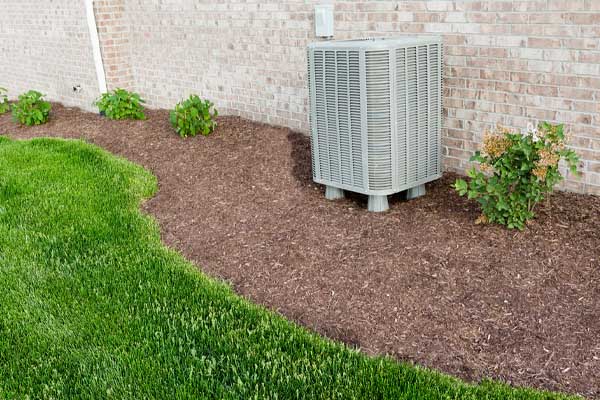
We turn to our air conditioner for comfort whenever the temperatures rise inside our homes during the summer. We only need to press several buttons, wait a few minutes, and you can enjoy a cooler home. This amazing piece of technology makes the worst summer days bearable. It helps us sleep well at night while also protecting us from potentially dangerous heat strokes. Earlier civilizations might think it is magical how we can now control our environment. However, the reality, HVAC systems are just an intelligent application of scientific concepts. In this article, we answer the question “How does an air conditioner work?”.
How Does My Air Conditioner Cool My Home?
Contents
- 1 How Does My Air Conditioner Cool My Home?
- 2 Parts Of An Air Conditioner
- 3 The Standard Cooling Cycle Of An Air Conditioner
- 3.1 Step 1: The Thermostat Signals The Need For Cooling
- 3.2 Step 2: The Refrigerant Absorbs The Indoor Air’s Heat
- 3.3 Step 3: Fans Blow Back Cooler Air To The House
- 3.4 Step 4: Heat Within The Refrigerant Is Released Outdoors
- 3.5 Step 5: Fans Blow The Hot Air To The Surroundings
- 3.6 Step 6: The Cold Refrigerant Returns To The Indoor Unit
- 3.7 Conclusion
- 4 Call PFO Heating & Air Conditioning For All Of Your HVAC Requirements
This article discusses how an air conditioner’s components, as a collective, keep your home cool and comfy during the hottest days of the year.
Parts Of An Air Conditioner
Before discussing the process, we should become familiar with the different air conditioner components. Here are its four main parts and their function during the cooling cycle:
AC Refrigerant
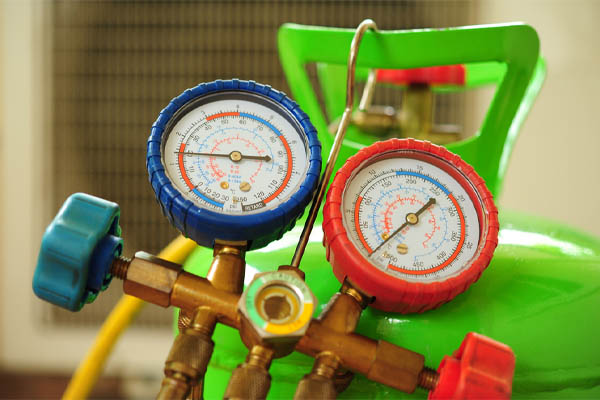
The refrigerant is known as the lifeblood of an air conditioner. It is a liquid chemical that transports the heat out of the house to the outdoor surroundings. The cooling cycle describes the refrigerant’s journey through the various components and how the refrigerant changes along the way.
Air Conditioner Evaporator Coils
This component is the indoor unit’s main part. It interacts with the home’s environment as it absorbs heat. The coils should be kept clean at all times for maximum performance. The air filters should also be replaced at regular intervals.
Condenser Coils Of An Air Conditioner
The outdoor unit’s main part interacts with the outside environment and releases heat. These coils are susceptible to debris and dirt, so they should be cleaned periodically. Make sure to book an air conditioner maintenance appointment before summer begins.
Air Conditioner Compressor
This pump ensures that the refrigerant keeps moving from the evaporator coils to the condenser coils. This is often referred to as the heart of an air conditioner.
The Standard Cooling Cycle Of An Air Conditioner
Here are the steps an air conditioner goes through during the cooling process:
Step 1: The Thermostat Signals The Need For Cooling
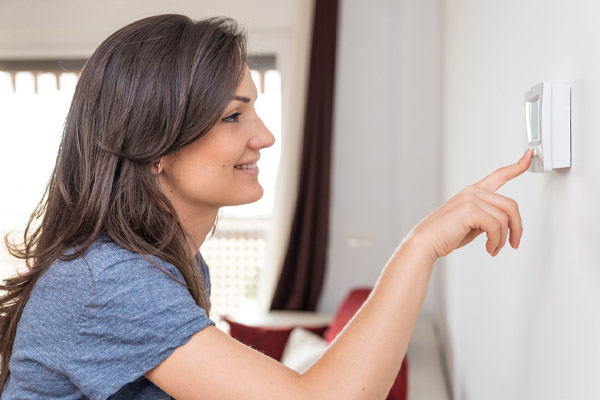
Since it is hot outside, you turn on the cooling system to your desired temperature using the thermostat. It is equipped with sensors that will check the current ambient temperature. The thermostat will send a signal to begin the cooling cycle when the desired temperature is higher. The compressor will start the process of making the refrigerant travel across the system. The fans will also switch on.
Step 2: The Refrigerant Absorbs The Indoor Air’s Heat
The refrigerant’s first stop is the indoor unit’s evaporator coils. At this time, the chemical is quite cold. It absorbs the heat like a sponge when it comes into contact with hot indoor air. The refrigerant gets warmer as the air becomes colder. Humid indoor air can cause the vapor to turn into water due to the lower temperature. Therefore, the air conditioning unit also works to lower indoor humidity. The air conditioner has a tray that collects the moisture and diverts it outside so that it doesn’t leak into the house and cause damage to the floor or walls.
Step 3: Fans Blow Back Cooler Air To The House
The cold air around the evaporator coils is blown back into the house by the fans. The cold air travels through the ductwork in each room in uniform cooling when you have a central air conditioning system. On the other hand, the fans will blow the cold air to a particular area or room when you have a split system. The latter lets the home’s occupants control the temperature within each zone so that their varying preferences are met. The indoor ductless unit in a room can also be turned off when it is unoccupied to reduce energy consumption.
Step 4: Heat Within The Refrigerant Is Released Outdoors
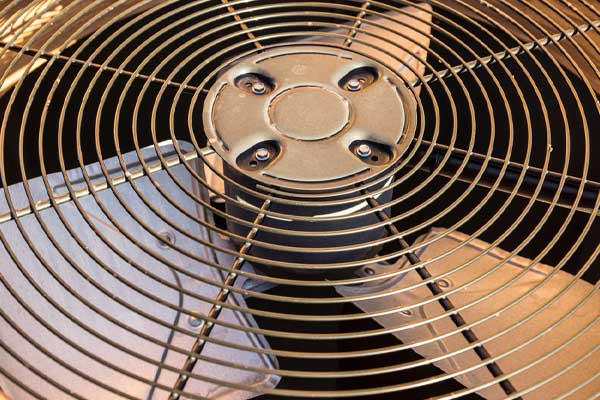
The refrigerant can’t continuously absorb heat because it also has its limits. Therefore, the hot refrigerant travels to the outdoor unit, where it releases the heat it has accumulated through the condenser coils. It will continue to release the heat as long as it is hotter than the outdoor environment. It will do so until equilibrium is reached.
Step 5: Fans Blow The Hot Air To The Surroundings
Powerful fans blow air over the condenser coils to help the refrigerant cool down. This way, the system can move heat outside at a quicker rate. The surroundings will get hotter, which you can check when you put your hand near the outdoor unit. This component is installed in an open area so the wind can just blow the hot air away. The air conditioner makes it possible for your home to release indoor heat to the surroundings continuously.
Step 6: The Cold Refrigerant Returns To The Indoor Unit
When the refrigerant is cold again, the compressor pumps it back to the indoor unit to repeat the cycle. This process continues until the thermostat detects that the indoor temperature is equal to the set temperature. The air conditioner will then stop and rest for a while. It will automatically restart the cooling when the indoor temperature rises again.
Conclusion
The air conditioner doesn’t generate cold air from scratch. It works by removing the heat from the house bit by bit until it is cold enough to satisfy the setting on your thermostat. This intelligent design has proven to be effective for a long time now. Newer models continue to push for energy efficiency to achieve greater comfort and lower energy consumption.
Call PFO Heating & Air Conditioning For All Of Your HVAC Requirements
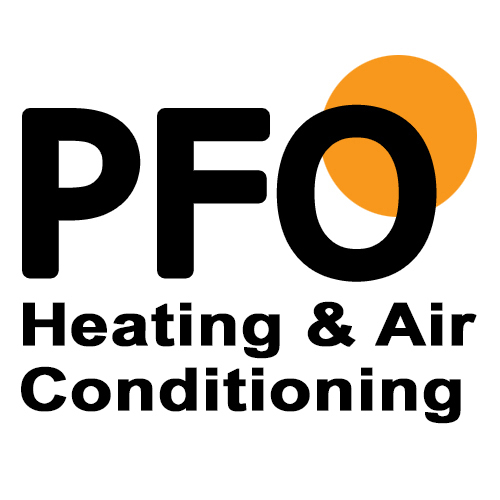 When you need superior HVAC services in the Greater Princeton, NJ area, call PFO Heating & Air Conditioning. We have exceptional certified technicians on staff that deliver outstanding heating and cooling maintenance, repairs, installations, replacements, and more. Every single one of our techs has years of experience under their belt, paired with extensive knowledge. This way, you can count on us to service your HVAC system correctly, the first time around.
When you need superior HVAC services in the Greater Princeton, NJ area, call PFO Heating & Air Conditioning. We have exceptional certified technicians on staff that deliver outstanding heating and cooling maintenance, repairs, installations, replacements, and more. Every single one of our techs has years of experience under their belt, paired with extensive knowledge. This way, you can count on us to service your HVAC system correctly, the first time around.
Our company guarantees to have the most affordable HVAC service rates in the area. Our tune-up services help improve your indoor air quality and comfort, increase energy efficiency, and reduce your energy bills. Should you require a repair or replacement, we can recommend the best solution for your home while staying within your budget. All of our work comes with a guarantee. Book your next service appointment and call PFO Heating & Air Conditioning today. We offer free, in-home estimates.
Click here to contact us now or call us at (800) 253-9001 to find out more!



